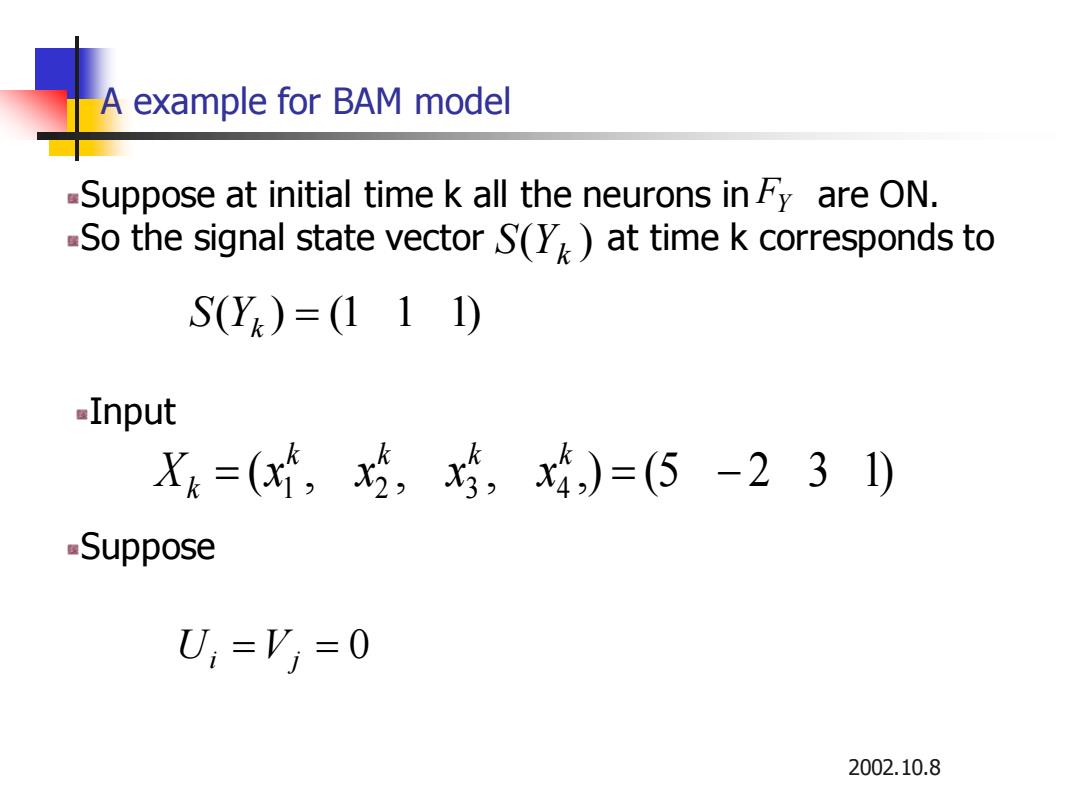
A example for BAM model -Suppose at initial time k all the neurons in Fy are ON. -So the signal state vector S(Yx)at time k corresponds to S(Y)=(111) -Input X6=(,,x5,x4,)=(5-23) -Suppose U,=V,=0 2002.10.8
2002.10.8 A example for BAM model Suppose at initial time k all the neurons in are ON. So the signal state vector at time k corresponds to FY ( ) S Yk ( ) = (1 1 1) S Yk Input ( , , , ,) (5 2 3 1) = 1 2 3 4 = − k k k k k X x x x x Suppose Ui =Vj = 0
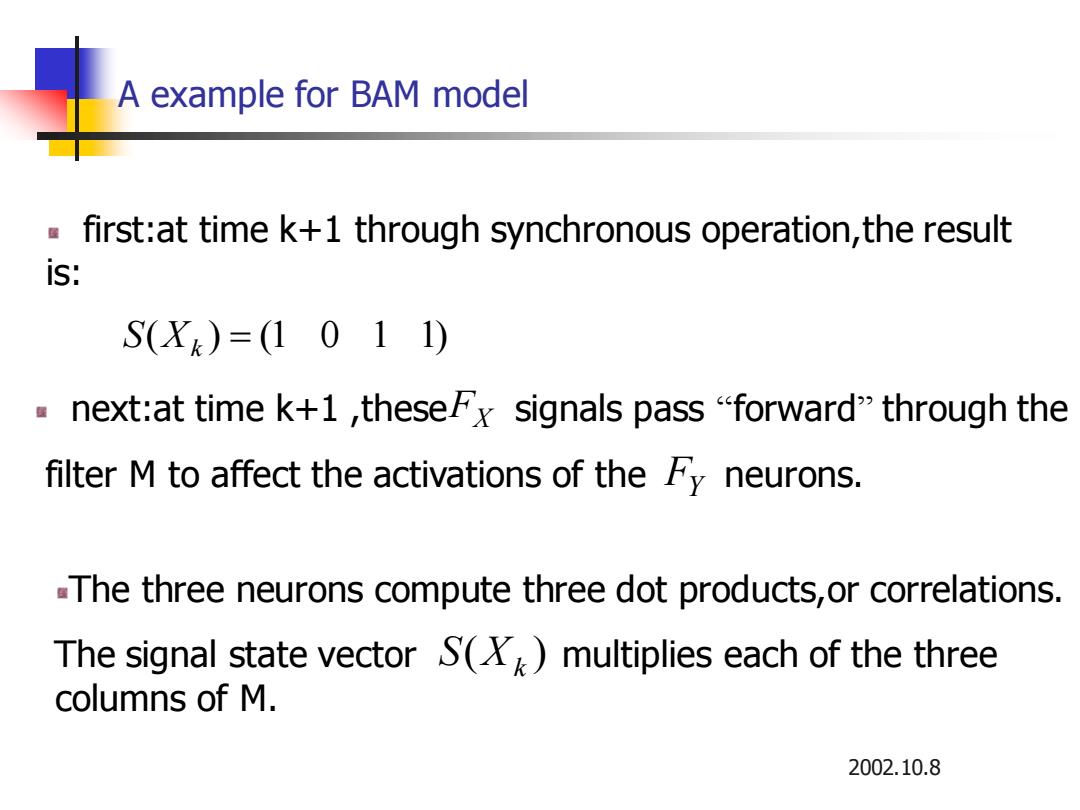
A example for BAM model first:at time k+1 through synchronous operation,the result is: S(Xk)=(1011) next:at time k+1 ,thesex signals pass"forward"through the filter M to affect the activations of the Fy neurons. -The three neurons compute three dot products,or correlations. The signal state vector S()multiplies each of the three columns of M. 2002.10.8
2002.10.8 A example for BAM model first:at time k+1 through synchronous operation,the result is: ( ) = (1 0 1 1) S Xk next:at time k+1 ,these signals pass “forward” through the filter M to affect the activations of the neurons. FX FY The three neurons compute three dot products,or correlations. The signal state vector multiplies each of the three columns of M. ( ) S Xk
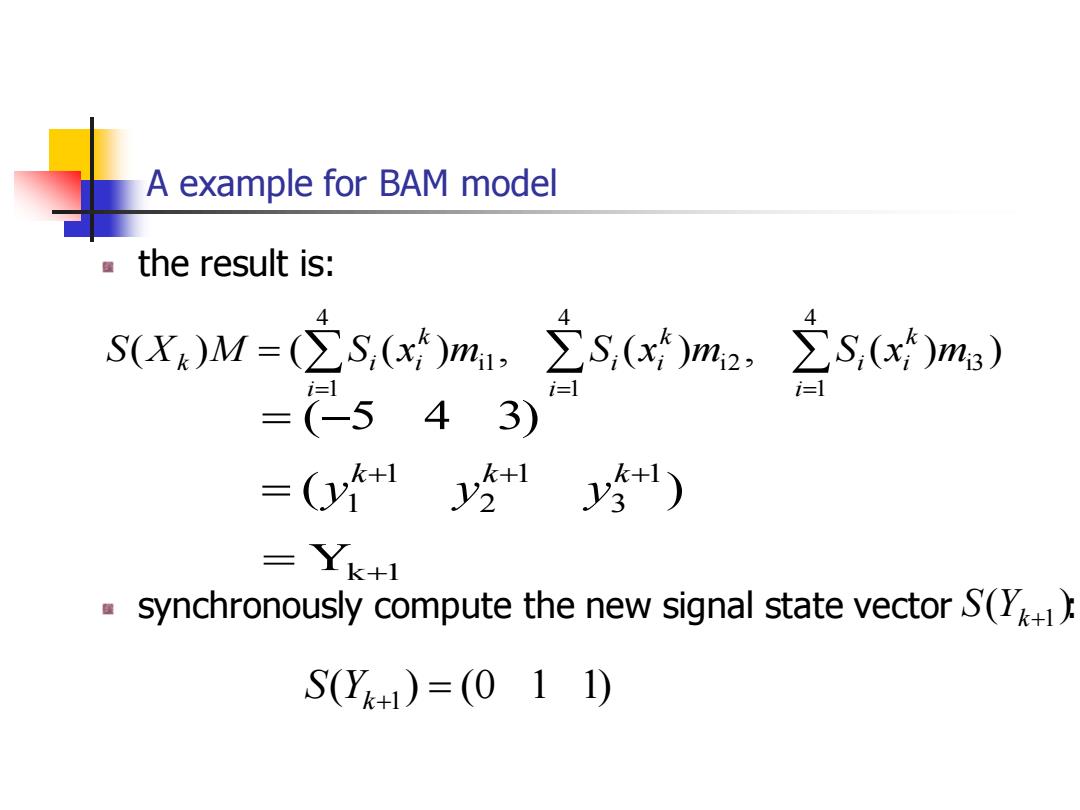
A example for BAM model the result is: SX)M=(2S,()m,∑S,(a)ma,∑S,(x)m:) i=l =(-543) =(1y+1) 、,k+1 二Yk+1 synchronously compute the new signal state vector S(Y S(Y+)=(011)
A example for BAM model the result is: ( ) ( ( ) , ( ) , ( ) ) 4 1 i3 4 1 i2 4 1 i1 = = = = i k i i i k i i i k S Xk M Si xi m S x m S x m = (−5 4 3) ( ) 1 3 1 2 1 1 + + + = k k k y y y = Yk+1 synchronously compute the new signal state vector : ( ) S Yk+1 ( ) (0 1 1) S Yk+1 =
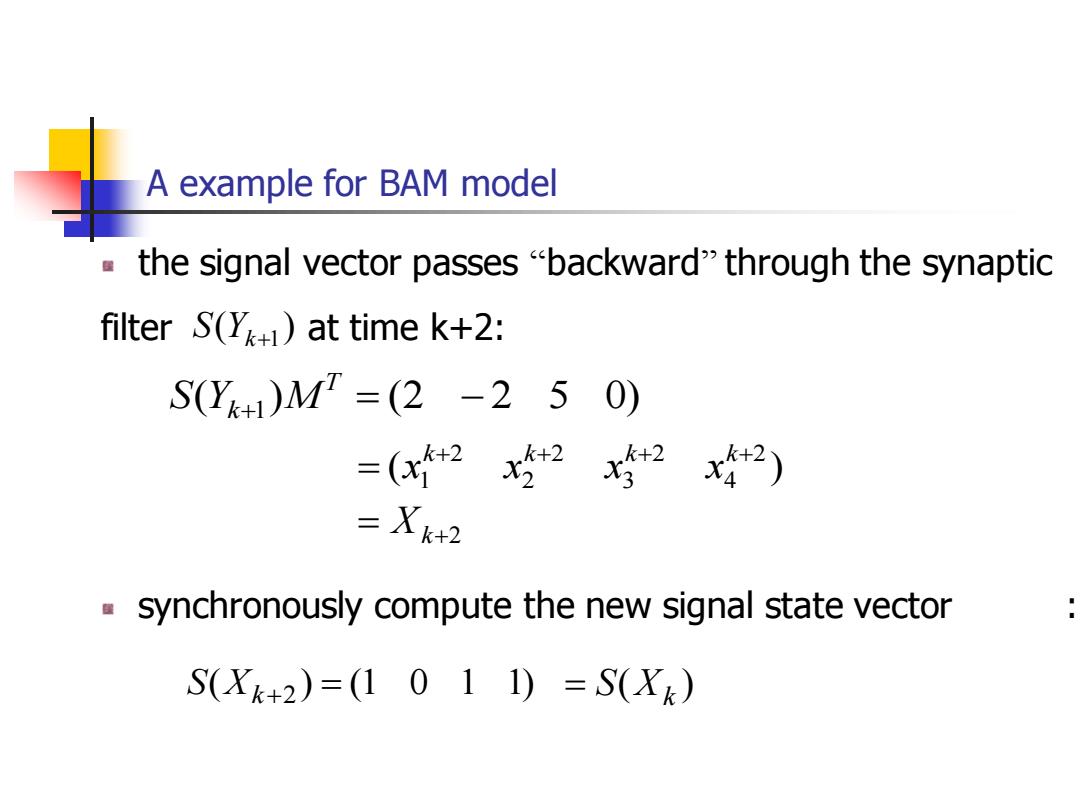
A example for BAM model the signal vector passes "backward"through the synaptic filter S(Y)at time k+2: S(Y+1)Mr=(2-250) =(x+2x252x4+2) =Xk+2 synchronously compute the new signal state vector S(Xk+2)=(1011)=S(Xk)
A example for BAM model the signal vector passes “backward” through the synaptic filter at time k+2: synchronously compute the new signal state vector : ( ) S Yk+1 ( ) (2 2 5 0) +1 = − T S Yk M ( ) 2 4 2 3 2 2 2 1 + + + + = k k k k x x x x = Xk+2 ( ) (1 0 1 1) S Xk+2 = ( ) = S Xk
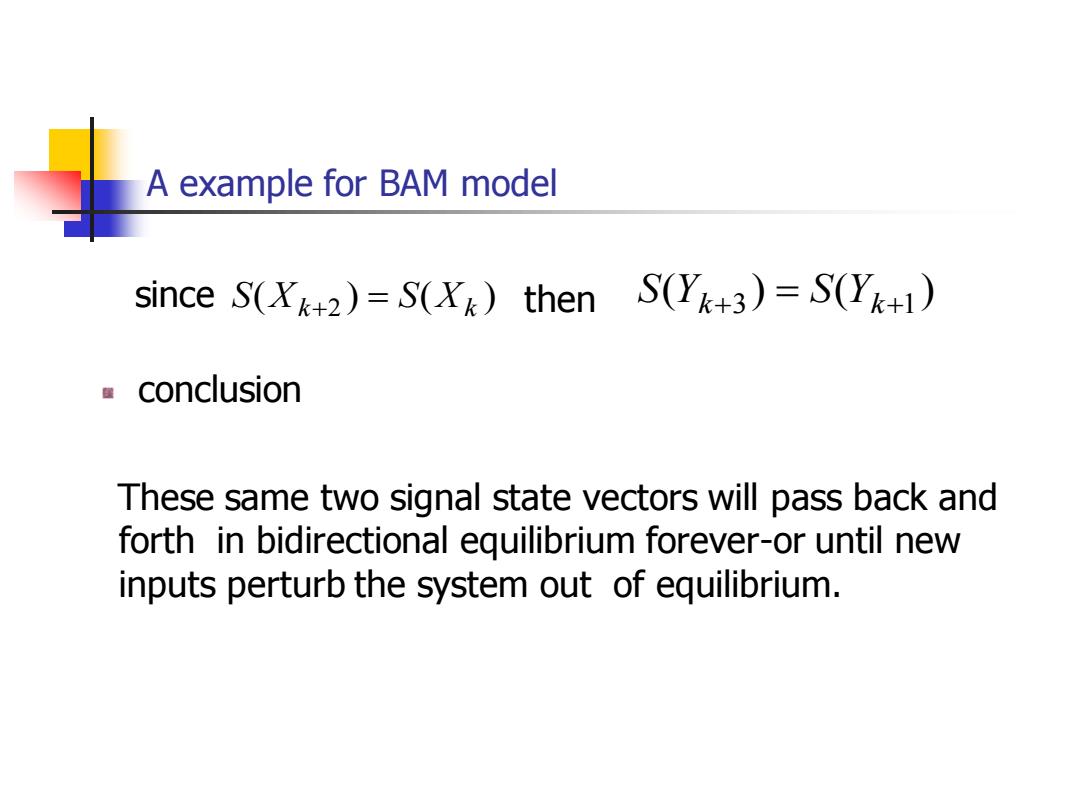
A example for BAM model since S(X+2)=S(X)then S(Y+3)=S(Y+1) conclusion These same two signal state vectors will pass back and forth in bidirectional equilibrium forever-or until new inputs perturb the system out of equilibrium
A example for BAM model conclusion ( ) ( ) S Xk+2 = S Xk since ( ) ( ) then S Yk+3 = S Yk+1 These same two signal state vectors will pass back and forth in bidirectional equilibrium forever-or until new inputs perturb the system out of equilibrium